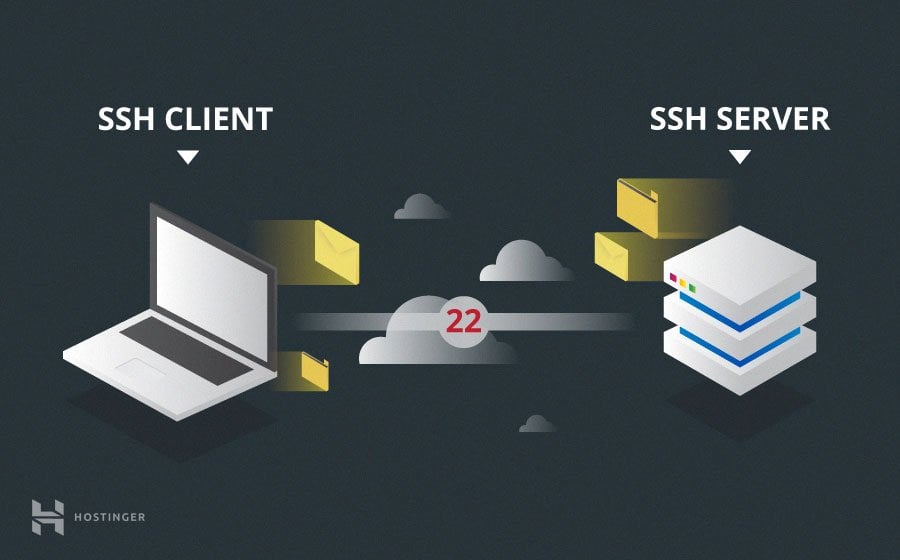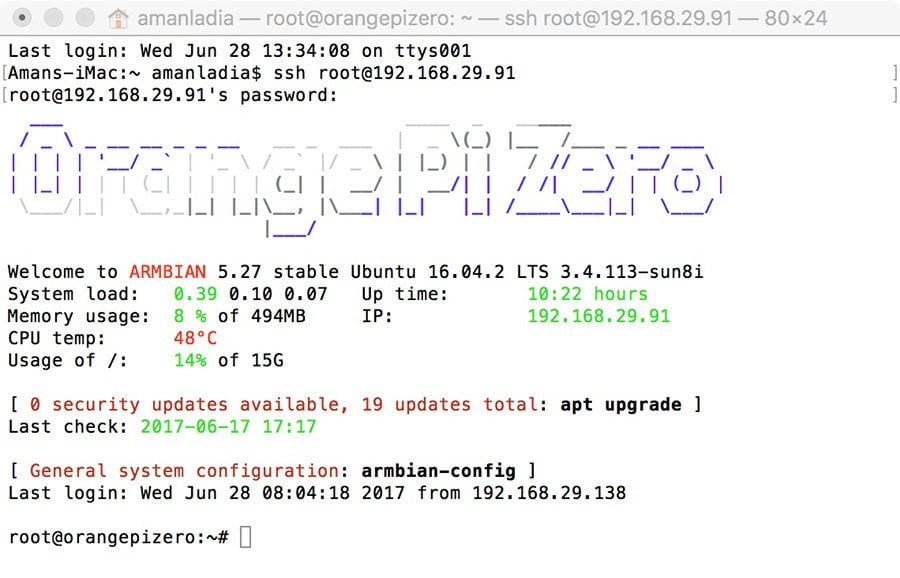RemoteIoT Web SSH Tutorial: Master Your IoT Devices Now!
Are you tired of being tethered to your desk, unable to manage your devices remotely? Remote access and security are paramount in today's interconnected world, and mastering remoteiot web SSH provides a powerful solution, revolutionizing how you interact with your IoT devices, offering a seamless and secure experience.
In the ever-evolving landscape of the Internet of Things (IoT), the ability to manage and control devices remotely is no longer a luxury, but a necessity. Whether you're troubleshooting issues, deploying updates, or simply monitoring system performance, a reliable SSH server is indispensable. Remoteiot web SSH steps into this space, providing a robust framework for managing IoT devices, ensuring that sensitive data remains protected while enabling seamless connectivity. This technology empowers developers, IT professionals, and IoT enthusiasts alike to take command of their devices from virtually anywhere, offering unparalleled flexibility and efficiency.
For those just starting out, understanding remoteiot web SSH is essential for mastering the fundamentals of IoT management. This SSH remote IoT tutorial offers a comprehensive overview of setting up and securing SSH connections for IoT devices. As a web developer, imagine the freedom of using SSH to connect to a remote server, effortlessly managing your development environment, deploying code, and testing applications. Thats where the remoteiot web SSH tutorial truly shines, providing you with the tools and knowledge to unlock a world of remote access possibilities.
This guide has been crafted to assist you in navigating the intricacies of the technology. By the time you're through, you'll have a solid understanding of how to set up, configure, and maintain secure remote connections to your IoT devices, allowing you to leverage this technology to enhance your remote access capabilities significantly. The remoteiot platform itself allows developers to connect to their IoT devices as SSH clients within a standard web browser. The remoteiot web SSH client can access IoT devices from anywhere, all you need is a web browser. Follow the outlined steps to access your IoT or Raspberry Pi device from any browser, granting you the flexibility to manage your devices from the comfort of your couch or even while grabbing a coffee.
If you're a Linux or Mac user, the process is simplified due to the built-in SSH capabilities. Windows users, however, will need to utilize an SSH client to open SSH connections. The most popular client, PuTTY, provides a readily accessible solution. For Mac and Linux users, begin by accessing your terminal program and following the procedures outlined. Remember, whether you're a developer, IT professional, or IoT enthusiast, remoteiot web SSH simplifies remote device management, making it an essential tool for modern workflows. The solution itself offers a robust approach for achieving this, empowering users with the ability to control their devices through a secure shell protocol via a web browser. Understanding how to leverage remoteiot web SSH can significantly enhance your operational efficiency, granting you the power to take control of your devices without breaking a sweat. Imagine the freedom of managing your servers, troubleshooting issues, or even running complex commands from your couch.
The Essence of Remote Access
Remote access, in the context of IoT, allows individuals and organizations to control, monitor, and manage devices from a distance. This is especially critical in situations where physical access is impractical, impossible, or costly. Think of industrial sensors in remote locations, medical devices in hospitals, or smart home devices that require constant maintenance. Remote access enables efficient management, timely intervention, and reduced operational costs.
The Role of SSH
SSH, or Secure Shell, is a cryptographic network protocol that provides a secure channel over an unsecured network. It is used for remote login to a server, executing commands, and transferring files. SSH employs strong encryption to protect the confidentiality and integrity of data transmitted between the client and the server. In IoT, SSH serves as a gateway, allowing secure remote access to devices. It facilitates the secure transfer of data, remote command execution, and file management, ensuring that sensitive information remains safe from unauthorized access.
Remoteiot Web SSH: A Powerful Solution
Remoteiot Web SSH is a web-based platform that allows developers, IT professionals, and IoT enthusiasts to connect to and manage their IoT devices securely through a web browser. This eliminates the need for dedicated SSH clients and simplifies remote access across different operating systems and devices. The platform is designed to ensure data security, offer seamless connectivity, and streamline the process of device management.
Key Benefits of Remoteiot Web SSH
- Secure Connections: Utilizes SSH, guaranteeing encrypted communication and protecting sensitive data.
- Cross-Platform Compatibility: Works with any device that has a web browser, eliminating OS-specific limitations.
- Simplified Management: Offers an intuitive interface, making it easy to manage devices and execute commands.
- Enhanced Efficiency: Empowers users to troubleshoot issues, deploy updates, and monitor devices remotely, saving time and resources.
Setting Up and Securing SSH Connections
The following steps provide a roadmap for setting up and securing SSH connections for your IoT devices:
- Install an SSH Server: This software must be installed on your IoT device to enable SSH connections. Examples include OpenSSH on Linux-based systems.
- Configure the SSH Server: This involves setting up the server, configuring the port (usually port 22), and setting up authentication methods.
- Set Up Secure Authentication: Strong authentication is critical. This involves using SSH keys instead of passwords, which are more secure.
- Firewall Configuration: Make sure that your firewall allows SSH traffic on the specified port.
- Test the Connection: Once everything is configured, test your connection by connecting to your device using a standard SSH client (such as PuTTY or the terminal).
The prerequisites for running the tutorial can vary depending on whether you use the manual or quick setup methods for opening a tunnel and accessing the remote device.
Practical Applications
Remoteiot web SSH can be applied in a wide variety of scenarios:
- Industrial IoT: Managing and monitoring sensors, actuators, and control systems in industrial environments.
- Smart Homes: Controlling and managing devices such as smart thermostats, lighting systems, and security systems.
- Remote Diagnostics: Troubleshooting and diagnosing issues on IoT devices remotely.
- Software Updates: Deploying software updates and patches to IoT devices securely and efficiently.
- Data Collection: Collecting data from IoT devices for analysis and monitoring.
The Future of Remote Access in IoT
With the increasing number of IoT devices being deployed across various industries, the need for reliable remote access solutions has never been greater. Remoteiot web SSH will continue to evolve, incorporating new features, enhanced security protocols, and improved user interfaces. This technology is an essential tool for modern workflows, simplifying remote device management and making it easier for developers, IT professionals, and IoT enthusiasts to manage their devices efficiently and securely.
Unlocking the Power of Remoteiot Web SSH: A Step-by-Step Guide
This guide aims to walk you through the process of setting up and using remoteiot web SSH, allowing you to efficiently manage your devices while maintaining the highest level of security.
Prerequisites: What Youll Need
- An IoT device (e.g., Raspberry Pi, Arduino with network connectivity).
- An active internet connection.
- A computer with a web browser (Chrome, Firefox, Safari, etc.).
- (Optional) An SSH client like PuTTY (for Windows users, though this tutorial focuses on the web interface).
- A Remoteiot account (you'll need to create one if you don't have it already).
Step 1: Accessing the Remoteiot Web SSH Interface
- Log in to your Remoteiot account.
- Navigate to the device management section.
- Select the IoT device you wish to manage.
Step 2: Configuring SSH on Your IoT Device
For Linux-Based Devices (e.g., Raspberry Pi):
- Enable SSH: SSH is usually installed and enabled by default. However, ensure that it is running. You can often check this using the command: `sudo systemctl status ssh`. If it's not running, use: `sudo systemctl start ssh`.
- Configure SSH Settings: Access the `sshd_config` file (usually located at `/etc/ssh/sshd_config`) to configure your SSH settings. Here, you might set up things like port forwarding, or customize authentication.
- Create a User: If you haven't already, create a user account for remote access. `sudo adduser ` Follow the prompts to set a password and other information. Then, make sure the user has sudo privileges for the IoT device.
Step 3: Establishing a Secure Connection
Remoteiot web SSH provides the necessary encryption, but further secure methods are vital.
- Enable Two-Factor Authentication (2FA): Use this to add additional security
- Regularly Update Your Devices: Make sure you keep your device up to date for security
Step 4: Initiating the SSH Session
- Inside the Remoteiot interface, locate the "Web SSH" option or icon associated with your device.
- Clicking this should open a web-based SSH terminal within your browser.
- Enter your device's IP address or hostname, and the username and password you created or use for your device.
Step 5: Utilizing the Web SSH Terminal
- Once connected, you'll be presented with a terminal interface within your web browser.
- You can now execute commands on your IoT device as if you were sitting right in front of it.
- Common tasks include: navigating directories, managing files, updating software, monitoring system resources, and configuring network settings.
Tips for Secure Remote Access
- Use Strong Passwords and SSH Keys: Never use weak passwords. Implement SSH key authentication for enhanced security.
- Regularly Update Your System: Keep your device's operating system and software up-to-date to patch security vulnerabilities.
- Monitor Device Logs: Regularly check the logs for any suspicious activity.
- Implement Firewall Rules: Configure your firewall to restrict access to only necessary ports and IP addresses.
- Limit User Access: Create dedicated user accounts for remote access and grant only the necessary privileges.
Troubleshooting Common Issues
- Connection Refused: Double-check that SSH is enabled on your device, the IP address is correct, and the port is open.
- Authentication Failed: Verify your username and password. If you use SSH keys, ensure they are correctly set up.
- Slow Performance: Check your internet connection and the resource utilization of your IoT device.
Advanced Techniques
- Port Forwarding: If your IoT device is behind a router, you will need to configure port forwarding to allow external connections.
- Reverse SSH Tunnels: Use reverse SSH tunnels to establish connections from behind a firewall.
- Automated Scripts: Utilize scripts to automate common tasks, such as software updates or data backups.
The Future of Remoteiot Web SSH
Remoteiot web SSH is not just a tool for today; its a window into the future of IoT management. Continuous improvements and integrations are on the horizon. The platform may soon see the integration of more advanced analytics, AI-driven automation, and enhanced security protocols. This evolution signifies a commitment to delivering a superior and more intuitive user experience, making remote device management more efficient than ever before.
The tutorials show you how you can open a tunnel and then use that tunnel to start an SSH session to a remote device.
Whether you're a developer, IT professional, or IoT enthusiast, remoteiot web SSH simplifies remote device management, making it an essential tool for modern workflows. Remoteiot web SSH offers a robust solution for achieving this, providing users with the ability to control their devices through a secure shell protocol via a web browser. Whether you're a developer, system administrator, or IT professional, understanding how to leverage remoteiot web SSH can significantly enhance your operational efficiency.


